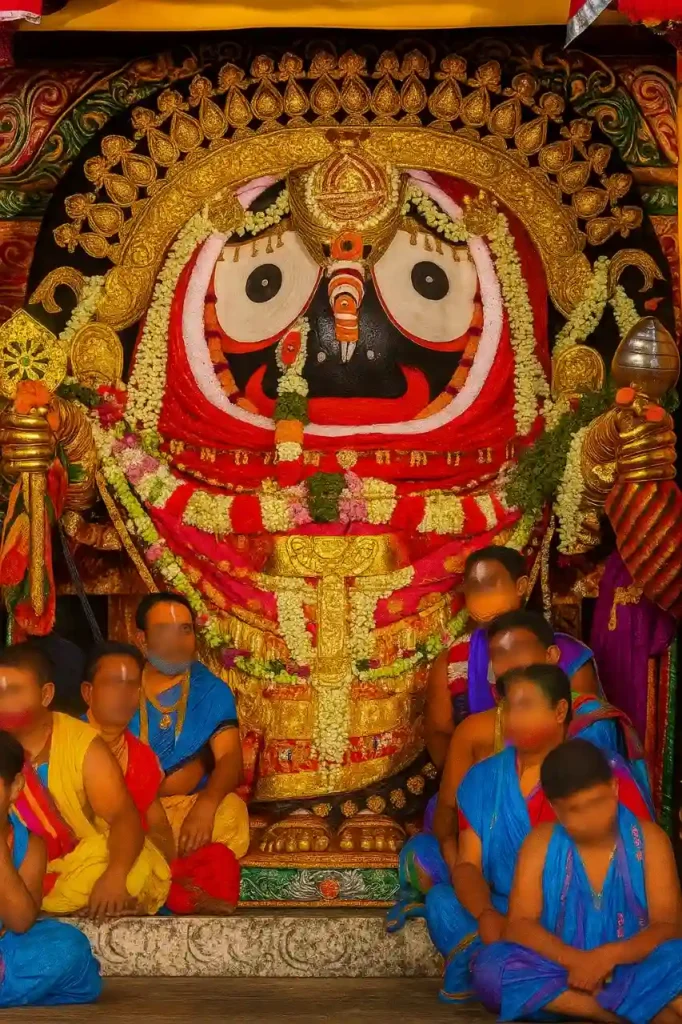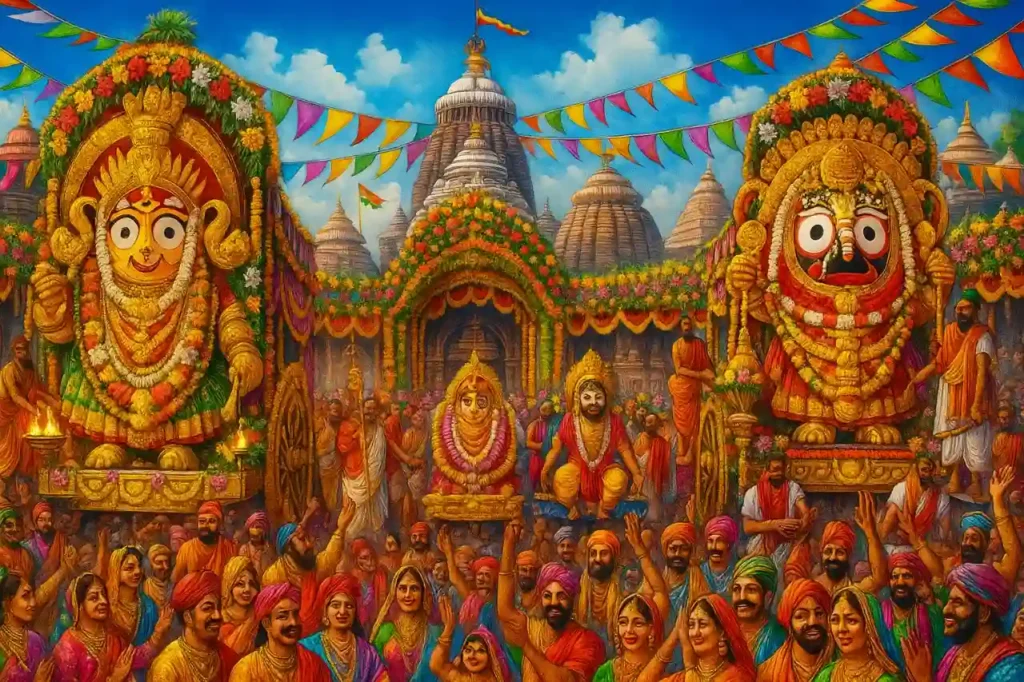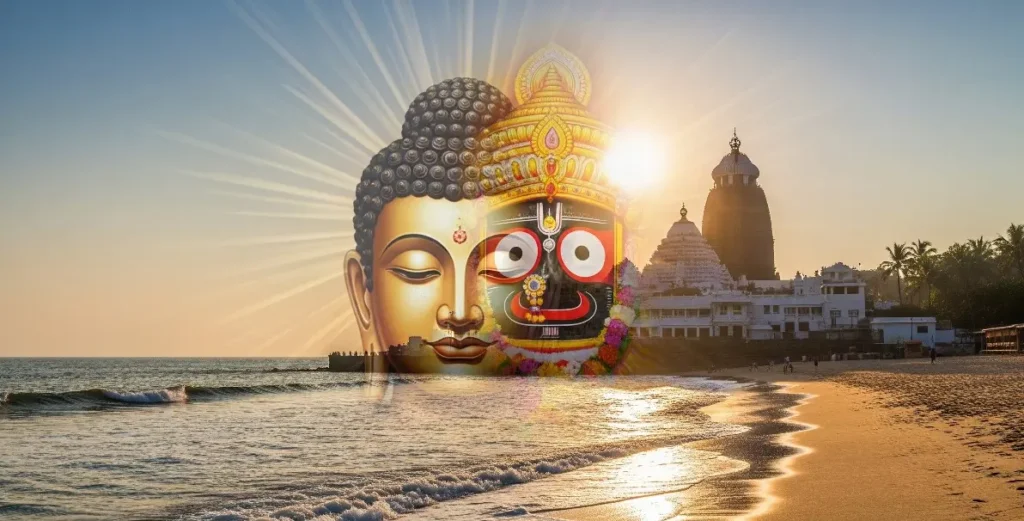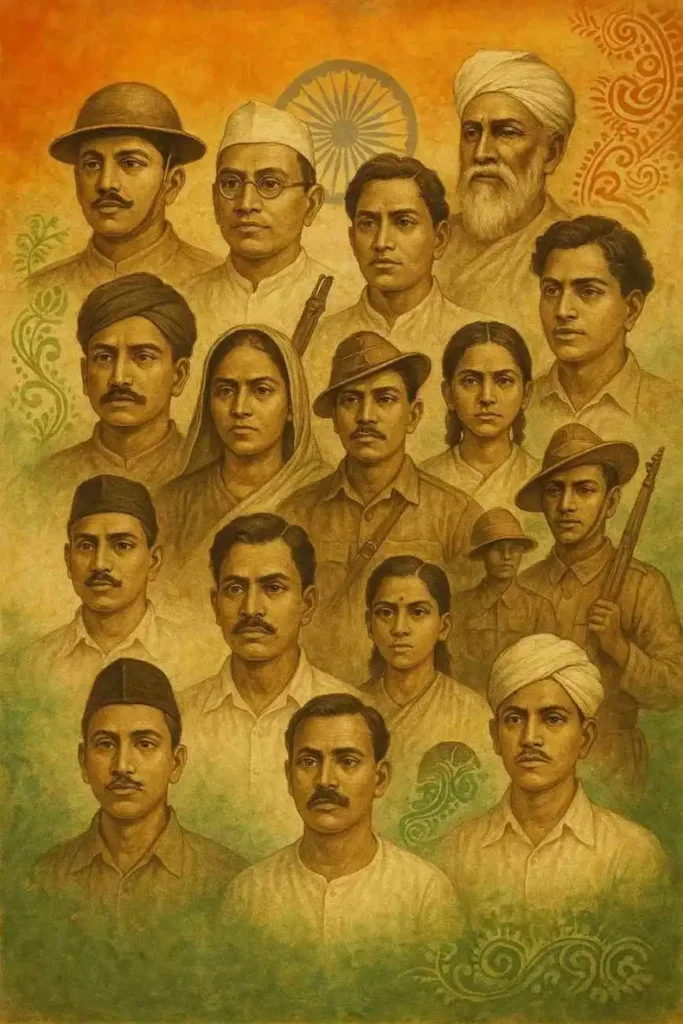Table of Contents
Every year, Puri’s Grand Road becomes a divine runway. Eventually, when the sacred chariot procession of Bahuda Yatra ends, Lord Jagannath and His siblings appear in a glorious golden attire, captivating millions. Notably, this divine form is called Suna Besha, a magnificent celebration of tradition, royalty, and devotion.
Therefore, if you’re an Indian traveler, a culture lover, or a devotee of Jagannath Mahaprabhu, this blog will take you deep into the story, significance, and soul of this ritual.What is Suna Besha?
This ritual specifically takes place on Ashadha Shukla Ekadashi—the 11th day of the bright fortnight of the Odia month Ashadha. It marks the day when the deities complete their Bahuda Yatra and return from the Gundicha Temple to the Shree Jagannath Temple (Srimandir).

Historical Roots of Golden Adornment Tradition
In the 15th century, King Kapilendra Deva (1435–1466 AD) started the tradition of Suna Besha. After he returned victorious from his South Indian campaigns, he donated a massive amount of gold to the Shree Jagannath Temple. The temple artisans used this gold to craft huge golden ornaments to adorn the deities.
People believe the king organized this grand event not merely to display wealth, but to express divine supremacy, protection, and Lord Jagannath’s sovereignty over all kings.
The Ornaments of the Gods
- Golden crowns (Makuta)
- Golden hands, feet, and chest plates
- Golden weapons like chakra, conch, mace, and plough
- Lotus, garlands, and floral patterns in pure gold
Where Does It Happen?
Thus, this outdoor public display allows even those who cannot enter the temple to get a glimpse of the Gods in their full golden majesty.
Spiritual Significance
- Divine sovereignty: Jagannath as the King of the Universe
- Spiritual wealth over material greed
- Unity and compassion, as people from all castes, classes, and backgrounds witness the spectacle without discrimination
People Also Ask
1. What is Suna Besha in Jagannath Temple?
2. When do hold Golden Adornment Tradition?
3. How much gold do the priests use in this ritual?
4. Can anyone see Suna Besha?
5. What is the meaning of the term "Suna Besha"?
Why You Must Witness Suna Besha at Least Once
Moreover, even if you’re not religious, the cultural, historical, and emotional power of this ritual is unforgettable.
Planning your spiritual journey?
🛕 Meanwhile, make sure to visit Puri during Ratha Yatra and witness Suna Besha in person.
📸 Furthermore, carry your camera and your prayers — you’ll return with blessings and memories.
🗓️ Additionally, mark your calendar for Ashadha Shukla Ekadashi every year!
Thus, let Lord Jagannath’s golden grace illuminate your heart.


